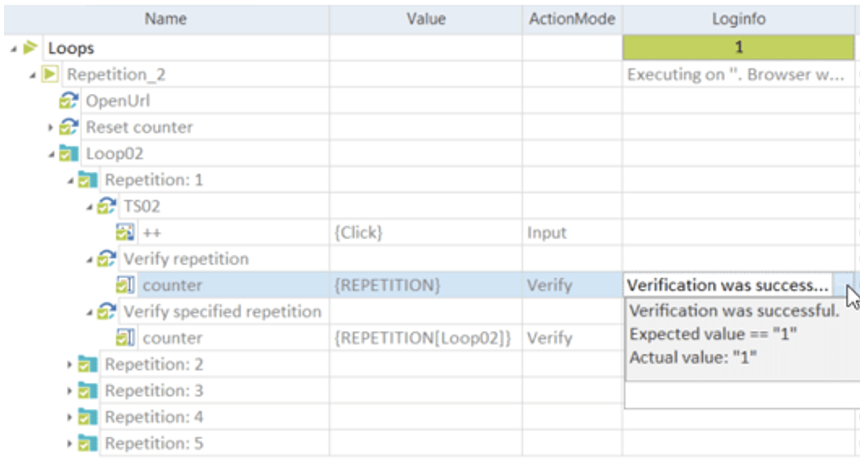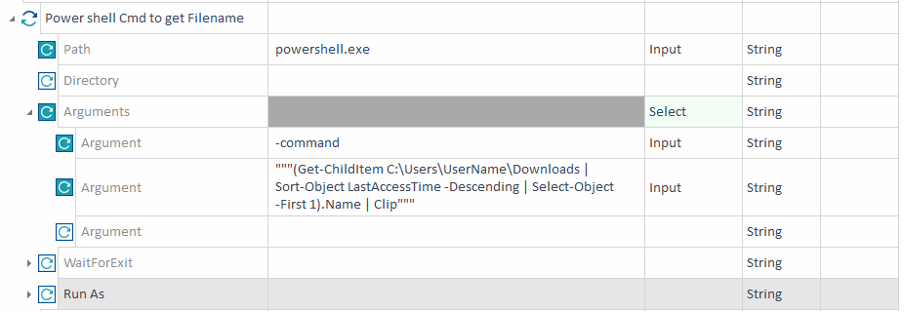
Master Tosca with Best Practices for Scalable, Maintainable Test Automation:
Test automation is no longer optional, it’s essential. Organizations must deliver faster without compromising quality, and manual testing quickly becomes a bottleneck. This is where Tricentis Tosca comes in - a robust, scriptless, and scalable test automation platform designed for continuous testing across enterprise environments.
Tosca’s model-based test automation approach eliminates the need for complex scripting. Its intuitive interface, reusable test modules, and seamless integration with CI/CD pipelines make it a favorite among enterprises using complex systems like SAP, Salesforce, and Oracle.
However, owning a powerful tool isn’t enough. Just like any other automation platform, Tosca’s real value lies in how well it's implemented and maintained. Poorly designed test cases or unstructured frameworks can lead to flaky, brittle automation - wasting time, increasing costs, and reducing confidence in your test coverage.
In this blog, we’ll share proven best practices for building scalable, maintainable, and high-performing Tosca automation suites. Whether you're just starting out or looking to optimize an existing setup, these insights will help you reduce flakiness, boost efficiency, and maximize ROI on your Tosca investment.
-
Organizing Your Tosca Workspace for Maximum Efficiency
A well-structured Tosca workspace is the foundation of sustainable test automation.
Establish a Clear Hierarchy- Keep core components such as General Modules, Requirements, Test Cases, Test Case Design, and Execution folders at the top level of your Master Workspace.
- This ensures a centralized structure that promotes reuse, reduces redundancy, and improves navigation.
Use Subfolders for Segmentation
- Organize project-specific or department-specific assets into subfolders based on business units, applications, or teams.
- This avoids workspace clutter and supports better traceability, especially in large enterprise environments.

-
Checkout, Checking, and Collaboration Best Practices
- Tosca’s version-controlled repository is a powerful feature that supports parallel test development across teams. But to truly benefit from it, teams must follow disciplined collaboration practices. Without structure, parallel work can quickly lead to conflicts, lost changes, and inefficiency.
- Always check out an object before making any changes. This locks the object for your use and prevents others from overwriting your work.
- Avoid checking out entire trees unless absolutely necessary. Use Checkout Tree at the lowest possible folder or object level to reduce lock scope and improve team productivity

-
Building Reusable and Readable Modules
Modules are the foundation blocks of Tosca test automation. Well-designed modules not only enhance test stability but also ensure your automation suite remains scalable, reusable, and easy to maintain. Think of modules as assets - investing time in building them correctly pays off in the long run.
Use logical, self-explanatory names for both Modules and their attributes. Avoid vague identifiers.
Example: Use LoginButton instead of Button1, and UsernameField instead of EditBox3.
Single Responsibility Principle
Design each module to represent only one UI control or one business function. This makes modules reusable across different test cases and simplifies maintenance.
Organized Attributes
Arrange controls and fields logically within each module (e.g., top-to-bottom or left-to-right as they appear on the UI). This improves readability and alignment with the application under test.
Minimize Maintenance
Where possible, use dynamic or smart control identification (like properties-based identification) instead of hard-coded values such as index or position. This ensures your modules are resilient to minor UI changes.

-
Designing Smart, Maintainable Test Cases
Creating well-structured, maintainable test cases is what separates a fragile automation suite from a scalable, long-term solution. Smart test case design reduces duplication, enhances reusability, and enables efficient test maintenance - even as applications evolve.
-
Consistent Naming Conventions
Follow a clear and descriptive naming pattern. This improves readability and makes test cases easy to locate and understand. -
Avoid Duplicates with Repetition Property
Instead of duplicating similar test cases, use Tosca’s Repetition Property at the folder level for tests that require looping over multiple data sets or repeating similar steps. -
Properly Link TestSheets to Templates
Always drag and drop TestSheets into Templates to bind them correctly - avoid manually typing XL-references, which can lead to errors and broken links during execution. -
Use Parameterization for Data-Driven Testing
Design your test cases to be data-driven wherever applicable. This allows you to test multiple scenarios using the same logical structure, minimizing duplication and maximizing flexibility.

-
Reducing Fragility: Move Away from Mouse and Keyboard Emulation
It’s tempting to simulate user actions using {CLICK}, {SENDKEYS}, or mouse movements - especially when testing UI flows. However, this approach makes your tests fragile and prone to failure with even minor UI changes.
Why Avoid Emulation?
-
Keystroke and mouse-based actions are sensitive to timing, screen resolution, and UI positioning.
-
A simple UI shift or layout change can break the test unexpectedly.
Better Approach: Control-Based Automation
-
Use Tosca’s control-based actions (like Set, Select, Click, Verify) which interact directly with UI elements through properties, not screen coordinates.
-
These actions are more resilient, stable, and easier to maintain, especially in applications with dynamic layouts or responsive designs.
-
Avoid hardcoding paths or sequences - use dynamic identifiers and reusable modules instead.

-
Maximizing Reusability with Repetition
As test automation suites grow, they can become bloated and redundant if reusability isn’t a core design principle. Tosca offers powerful features like Repetition and parameterization to help you keep your test cases lean, maintainable, and scalable.
Best Practices for Using Repetition
Use Repetition at the Folder Level
Apply the Repetition property at the folder level to handle looping scenarios—such as testing multiple sets of inputs or performing the same task across various users or configurations.
Parameterize Instead of Duplicating
Avoid copy-pasting the same block of logic. Instead, reuse test steps and make them dynamic using data tables (TestSheets) and parameters. This simplifies maintenance and reduces the risk of inconsistencies.
Modularize Shared Logic
Common functions like login workflows, API authentication, or form validation should be abstracted into modular TestCases or Reusable TestStep Blocks. These can then be referenced wherever needed, ensuring consistency and saving time.

-
Designing Robust Recovery and Clean-Up Scenarios
Failures happen. The key is not just recovering from them but recovering smartly.
Recovery Levels in Tosca:
- TestCase-Level Recovery: Restarts the entire test in case of failure.
- TestStep-Level Recovery: Attempts to fix or recover at the step that failed.
Clean-Up Best Practices:
- Always close browsers, clear cookies, reset the environment after test runs.
- Kill hanging processes like browser instances using clean-up scenarios.
- Tests should always start from the same state to run correctly.


-
Managing Execution Lists Efficiently
In Tosca, ExecutionLists are more than just a way to run tests - they play a critical role in reporting, traceability, and test cycle organization. Properly managed ExecutionLists help ensure transparency, reusability, and efficient test execution across teams.
ExecutionList Management Tips:
-
Organize by Feature, Sprint, or Release: Structure ExecutionLists based on logical test groupings such as features, application modules, sprints, or releases. This improves alignment with project milestones and simplifies test planning.
-
Use Consistent, Intuitive Naming: Adopt a naming convention that reflects purpose and scope.
-
Clean Up Regularly: Archive or delete outdated or unused ExecutionLists to avoid clutter. A clean workspace helps maintain performance and reduces confusion - especially in long-term or enterprise-scale projects.
-
Maintain Version Traceability: Always associate ExecutionLists with specific TestCaseVersions. This ensures that execution reports are traceable to the exact version of the test case used at the time, which is crucial for auditability and compliance.
-
Synchronization and Strategic Waiting
One of the most common causes of flaky or slow test execution is poor handling of wait conditions. Relying on static waits (wait(5000)) may temporarily solve timing issues but often leads to inefficient test cases.
Best Practices for Synchronization
Use Dynamic Waits Over Static Delays : Replace fixed wait times with dynamic waits like WaitOnExistence, WaitOnProperty, or Exists - these wait only as long as needed, adapting to the application's actual load time.
Set Reasonable Timeout Values: Avoid extreme timeout settings. Define realistic timeouts based on expected system behaviour to prevent false negatives and unnecessary delays.

-
Key Benefits Table: Tosca Best Practices at a Glance
|
S. No |
Best Practice Area |
Approach |
Benefits |
|
1 |
Workspace Organization |
Structured folders and clear naming conventions |
Easier collaboration and maintenance |
|
2 |
Team Collaboration |
Frequent Checkins and responsible Checkouts |
Fewer conflicts, smoother teamwork |
|
3 |
Module Design |
Single-function, logical Modules |
High reusability, lower maintenance cost |
|
4 |
Test Case Design |
Repetition and parameterization |
Scalable, clean test suites |
|
5 |
Interaction Handling |
Avoid mouse emulation, prefer control actions |
More stable and faster tests |
|
6 |
Recovery and Clean-Up Strategy |
Intelligent recovery and environment reset |
Higher test reliability |
|
7 |
Execution Management |
Logical grouping and archiving |
Easier tracking and reporting |
|
8 |
Synchronization |
Dynamic waiting strategies |
Reduced flakiness, faster test runs |
Tosca with SAP: Best Practices
SAP systems are large, tightly integrated, and business-critical - making them ideal candidates for automation. Tosca, with its model-based, scriptless automation, provides deep support for SAP GUI, Fiori, WebDynpro, and even custom SAP modules. However, automating SAP requires thoughtful planning and adherence to enterprise best practices.
Use SAP Standard Modules First- Leverage standard controls and modules before creating custom ones.
- Stay aligned with Tricentis SAP best practices and updates.
- Regularly check for module updates via Tosca Updates.
- Break complex flows (like Order-to-Cash) into modular TestCases: CreateSalesOrder, ApproveOrder, GenerateInvoice, PostPayment
- Use TestCase References to build end-to-end flows using these modules.
- Use dynamic identification (e.g., based on labels or tooltips).
- Avoid identifying fields by index or position unless static.
- Use Tosca’s “Anchor” feature and SAP-specific properties (TechnicalID, Field Name) to locate elements reliably.
- Replace fixed waits with WaitOnExistence, Exists, or VerifyControl.
- Synchronize after actions like Save, Post, or Execute to ensure data persistence.
- Set proper timeout values to avoid long test durations.
- Use TestCase Design and TestSheets to manage data variants.
- Establish golden test data sets in a dedicated SAP environment.
- Use non-production environments with sanitized or scrambled data.
- Maintain role-based access for test execution.
- Do not hard-code passwords
Conclusion: Why Following Best Practices in Tosca Matters
Choosing Tricentis Tosca is a smart move for enterprises looking to scale automation across complex applications. Its model-based, scriptless approach offers immense potential for reducing manual effort and accelerating delivery.
But simply owning a powerful tool isn’t enough. True success with Tosca comes from disciplined execution - by following best practices across every stage: from workspace organization and module design to test data management, recovery strategies, and synchronization.
When these principles are applied consistently, Tosca evolves from just a testing tool into a strategic enabler - driving efficiency, quality, and ROI across the software development lifecycle.
.png)
Pricing Procedure in MM with Discount, Surcharges, and Taxes

5 min read
Enhancing Tosca with PowerShell: Managing Dynamic Downloads & File Edits
.png)
4 min read
Unlocking AI Success: The Critical Role of Process Intelligence in SAP Transformations
.png)
2 min read
Five Smart Ways to Speed Up Your SAP BTP Rollout
Putting SAP Business Technology Platform (BTP) into action isn’t just about tech - it’s your chance to spark innovation, smooth out integration, and...

.jpg) Haritha Kunam
Haritha Kunam
.png)
.png)